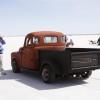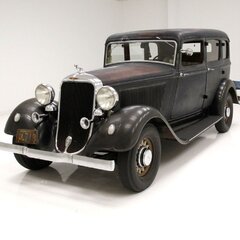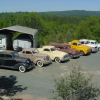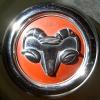-
Posts
6,317 -
Joined
-
Last visited
-
Days Won
36
TodFitch last won the day on March 3
TodFitch had the most liked content!
Reputation
1,132 ExcellentAbout TodFitch

Contact Methods
-
Website URL
https://www.ply33.com/
Profile Information
-
Gender
Not Telling
-
Location
Spanish Village by the Sea
-
My Project Cars
1933 Plymouth
Converted
-
Location
Southern California
-
Interests
various
Recent Profile Visitors
The recent visitors block is disabled and is not being shown to other users.
-
Off topic, but so far as I know there are no local automotive instrument repair shops near me. But there is a very good shoe repair shop very close by. In addition to shoes they will also repair various leather goods, etc.
-
See: https://www.ply33.com/Repair/tempgauge
-
From the pictures it looks like the reflector is held in the rim by some spring clips. And that reflector does not look like the back of a sealed beam lamp to me. Were it me, I’d be trying to disassemble it some more. And as Plymouthy points out, there is some corrosion in there to be dealt with along with really aged wiring.
-
If I recall correctly, sealed beam bulbs are typically identified by "PAR" for "parabolic aluminized reflector) and then a number which is the bulb outer diameter in 8ths of an inch. So a sealed beam replacement would be a 6v PAR36. But that is all from memory and my memory is not what it used to be. And it looks like that is not really a sealed beam setup but rather a bulb and reflector.
-
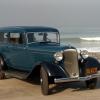
Rear axle vent fitting. Here's a real head scratcher !
TodFitch replied to Noonan's topic in P15-D24 Forum
For the newer people, DCM is DCM Clasics in Zeeland Michigan. The rear axle vent mentioned is at https://www.dcmclassics.com/catalogs/p/all/parts_by_year-1939_1947_dodge_truck-brake_parts/654d296f1d3770f709bea2dc/br-216-rear-axle-vent -

Rear axle vent fitting. Here's a real head scratcher !
TodFitch replied to Noonan's topic in P15-D24 Forum
That is a Zerk grease/oil fitting of the type used before 1934. At least before 1934 for US built Plymouths, maybe they kept that style later in other assembly plants. I've got one on each side of my rear axle to grease the wheel bearings. The vent, at least on my car and I think pretty standard for a lot of later years, is a special bolt drilled with a vent hole that holds the brake Tee mounted on the top of the rear axle. -
Front axles are tightened just enough that the bearings start to drag when you spin the wheel then backed off to the nearest hole for a cotter pin. Or looking at page 12 in the 1946-54 Plymouth Factory Service Manual: Reprints of the factory service manual are available if you can't find an original. Definitely recommend anyone working on a car have a copy of the factory service manual for that car.
-
About the only metric thing on the car is the 14mm spark plugs. Maybe the Shrader valves too but I am not certain about those. The 144 an 37 are the number of teeth on the gears. Divide 144 by 37 and you get 3.89189 which is basically 3.9 They use teeth count that are not evenly divisible so that the wear is distributed across all of the gears.
-
My documentation indicates that the PG used engines PF7232 through PF41049. So I am guessing your engine number is actually PF10400 and came from a PG car. I am not as familiar with the 1934 engine variations as I am for 1933 but I think the main difference between the PE and PF engines is the PE used the later bypass thermostat while the PF did not. Everything else should be the same (watch me get corrected on this last statement). As far as things bolted onto the engine, the PE may have come with an automatic clutch, a slightly different distributor and/or carburetor. As to your car itself, there should be a serial number tag on the passenger side door hinge post. If you post that we can tell what it thinks the car is. If you don’t feel comfortable posting the serial number, you can look it up yourself on my VIN page at https://www.ply33.com/Misc/vin You may find some other pages on my website useful as well so take a look around when you go there. The PE and PF have independent front suspension while the PG reverted back to a beam axle. The PE had doors on the rear of the sides of the hood (louvers toward the front), PF and PG had louvers only. Headlights and some other trim is also different between the PE Deluxe and the PF Standard or PG Business versions.
-
If modern manufacture then the DC motors are likely to have permanent magnets for the field so they will be polarity sensitive. Small 6v DC motors are also available on Amazon. I wonder if you could match up the physical size of the 12v DC motor in the heater you are considering with a 6v DC one. . .
-

Plymouth Passenger Car Parts List Model Series P15
TodFitch replied to David T's topic in P15-D24 Forum
I have entered the ones I had from my copy of the "standard parts" book into my website’s database at https://www.ply33.com/Parts/group18 so you can look up a large number of nuts & bolts there. -
Per @Mark D you unscrew them. It might be useful to see how modern replacements look, there are some on the O'Reilly Auto Parts website as well as McMaster-Carr and other sites.
-

Need help on how to use Miller Brake Gauge MT-19 tool kit.
TodFitch replied to MarcDeSoto's topic in P15-D24 Forum
I have seen recent posts from him, or at least someone in the same town with the same car on the AACA forums. -

Modern Lube for old transmissions including Overdrive
TodFitch replied to Loren's topic in P15-D24 Forum
I vaguely recall that the manual for the 1963 Dodge D200 I once had called for ATF in the manual transmission. So I think the transition from gear oil started earlier than the 1970s. -
Not for 1933 Plymouth. And based on the intake manifold photos I have seen, apparently at least some later trucks are likely the same as my '33.


